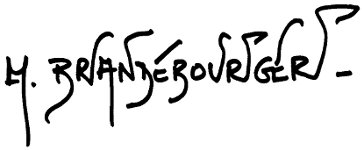Biography
Alain Brandebourger was born deep in a remote area of Ubangi-Chari in an environment of adventure. Despite a tough world without electricity, drinking water or comfort, he had a happy childhood and spontaneously began drawing at the age of five years in the sand on the floor. Later at school he drew maps in a natural freehand for his classes in geography.
His mother, seeing his talent as a gift of God, encouraged him to develop his art. But since there were no teachers or mentors in the savannahs, he was required to teach himself. Gorging on African landscapes, characters, and legends that stimulated his imagination, he filled notebooks with exotic flowers, birds, and multicolored butterflies until the age of 19.
At the death of his father, Alain had to abandon veterinary studies and return to France. An experienced horseman, he began working in the equestrian industry where he met Jean Gabin. While working with Gabin he became a successful breeder of champion horses and began a career that would last more than forty years. Living in Normandy, he hobnobbed with the actor and his circle of friends as well as with many celebrities such as Greek ship owners who loved horses.
During this period Alain continued to develop his art in parallel with his professional activity. His intimate knowledge of horses inspired a unique style in his equestrian painting. But while painting horses, he also painted women, his other favorite subject. Often their curves merged with those of horses to evoke modern centaurs. One can immediately recognize a Brandebourger by these characteristics, which have made his exhibitions so successful.
Alain’s professional life changed greatly when his stud horse was killed by an epidemic and he found himself out of work. But while such a twist of fate would have destroyed more than one man, he recovered and saw opportunity. He saw the opportunity to devote himself entirely to his art. Released by the accidents of life with its duties and contingencies and having a desire to give meaning to his work, he now explores new techniques and develops his pictorial research. While his work is already well established, it is now moving towards an even higher level of maturity.

